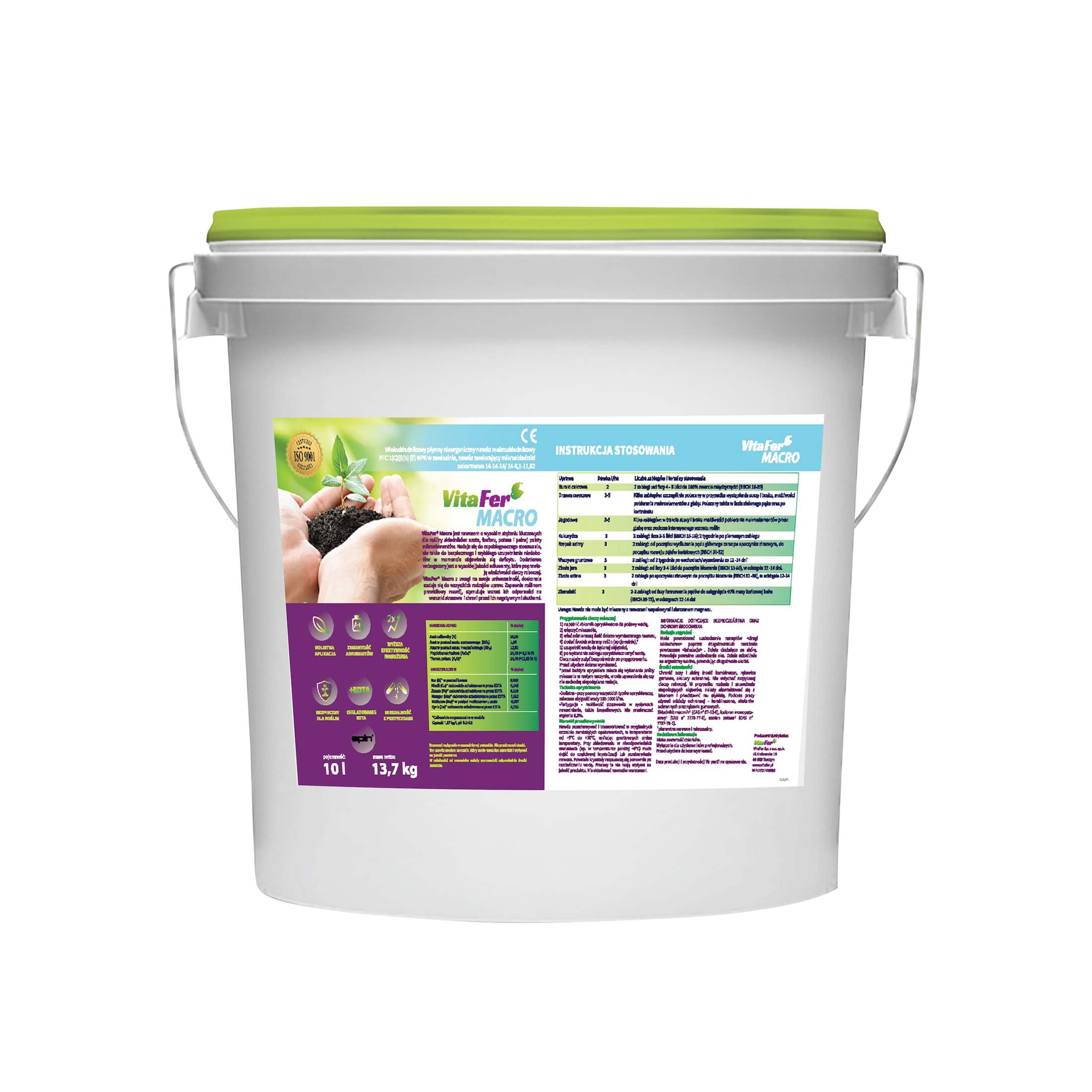Description
Recommendations for use:
– is suitable for intervention and preventive supplementation of nitrogen, phosphorus and potassium deficiencies as soon as they become apparent.
– guarantees balanced and comprehensive plant nutrition
– supplies plants with phosphorus during periods when the natural uptake of phosphorus by the root system is impaired, e.g. by low soil temperatures.
– quickly compensates for nutrient deficiencies
– improves water management in plants and increases their tolerance to drought
– increases the tolerance of plants to stresses related to the development of fungal diseases or pest damage.
– stimulates the development of the root system and increases the absorption of nutrients from the soil.
| MACROELEMENTS | % weight | % volume |
|---|---|---|
| Nitrogen (N) | 14.00 | 19.18 |
| Phosphorus (P2O5)) | 14.00 | 19.18 |
| Potassium (K2O) | 14.00 | 19.18 |
| MICROELEMENTS | % weight | % volume |
| Boron (B) | 0.035 | 0.048 |
| Copper (Cu) | 0.045 | 0.061 |
| Iron (Fe) | 0.100 | 0.137 |
| Manganese (Mn) | 0.015 | 0.021 |
| Molybdenum (Mo) | 0.007 | 0.009 |
| Zinc (Zn) | 0.035 | 0.048 |
The role of nitrogen in crops:
- building material for proteins and nucleic acids
- ensures proper development of plants: roots and above ground parts
- important constituent of chlorophyll, vitamins, hormones and DNA
- has a beneficial effect on optimum vegetation length: flowering and yielding
- improves water management in plants, increases drought tolerance.
- stimulates the development of the root system and increases the absorption of nutrients from the soil
The role of potassium in crops:
- is responsible for the quantity and quality of the yield
- participates in the regulation of nitrogen uptake
- is responsible for the water management in plants
- contributes to building resilience to drought conditions
- promotes the development of the root system and the uptake of other nutrients from the soil
- increases the frost resistance of plants
- is involved in the formation of starches and sugars.
The role of phosphorus in plants:
- improved root system development and increased uptake of nutrients from the soil
- improved quality parameters of the crop, especially starch, sucrose, proteins and vitamins
- improves photosynthesis and cell respiration parameters
- increases plant resistance to lodging, freezing
- reduces the negative effects of nitrogen over-fertilization
Nitrogen deficiencies result in:
- Light green color of leaves and plant stems in extreme deficiency turning into yellow discoloration of leaves
- Abnormal, reduced plant habit
- Poorly formed fruit, pods, or ears
- Accelerated maturation
- Increased susceptibility to fungal diseases and the effects of insect feeding
Potassium deficiencies result in:
- Inability to defend themselves against drought stress: plants lose their turgor and start to wilt
- Yellowing of leaves progressing from the edges. Over time, the leaves wilt, turn brown and die
- The plants are smaller, with a shorter and more flaccid stem
- Delayed flowering, flowers are noticeably smaller
- Limited ear and cob formation, poor grain pouring
Phosphorus deficiencies result in:
- Slower growth of crops, dwarfing
- Purple-pink coloring of stems and lower leaves
- Slowing down of root growth
- Reduction in foliation, weaker tillering
- Greater susceptibility to fungal diseases and pest attack
- Reduced yields of poorer quality
Dosage and timing of application:
| Crop | Dose (l/ha) | Number and Timing of Treatments |
|---|---|---|
| Sugar Beet | 2 | 2 treatments: from the 4-6 leaf stage to 100% canopy closure (BBCH 16-39) |
| Fruit Trees | 3-5 | Several treatments: particularly recommended when drought occurs and macroelements cannot be taken up from the soil. Also recommended in the green bud stage and after flowering. |
| Berries | 3-5 | Several treatments: during drought and lack of macroelement uptake by the soil and during intensive plant growth |
| Maize | 3 | 2 treatments: 3-5 leaf stage (BBCH 15-18); 2 weeks after the first treatment |
| Winter Oilseed Rape | 3 | 2 treatments: from the beginning of the elongation of the main shoot immediately after winter rest until the beginning of the development of the flower buds (BBCH 30-52) |
| Field Vegetables | 3 | 3 treatments: from the 2nd week after emergence/planting every 12-14 days |
| Spring Cereals | 3 | 2 treatments: from the 3-4 leaf stage to the beginning of earing (BBCH 13-50), at an interval of 12-14 days |
| Winter Cereals | 3 | 2 treatments: after winter rest until the beginning of earing (BBCH 31 -50), at an interval of 12-14 days |
| Potatoes | 3 | 2-3 treatments: from the shoot formation stage until 40% of the final weight of the tubers is reached (BBCH 35-73), at intervals of 12-14 days |
Attention: The fertilizer must not be mixed with calcium fertilizers and magnesium sulphate
Fertigation – concentration up to 0.3%






